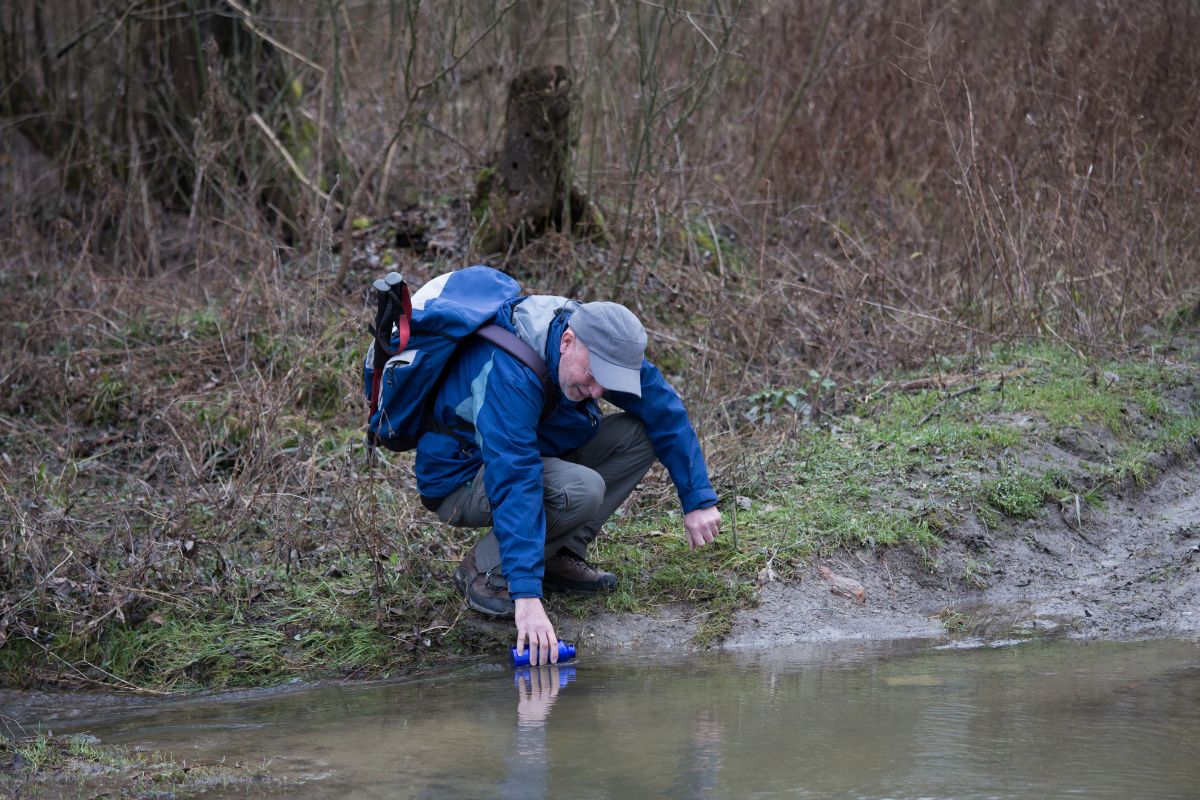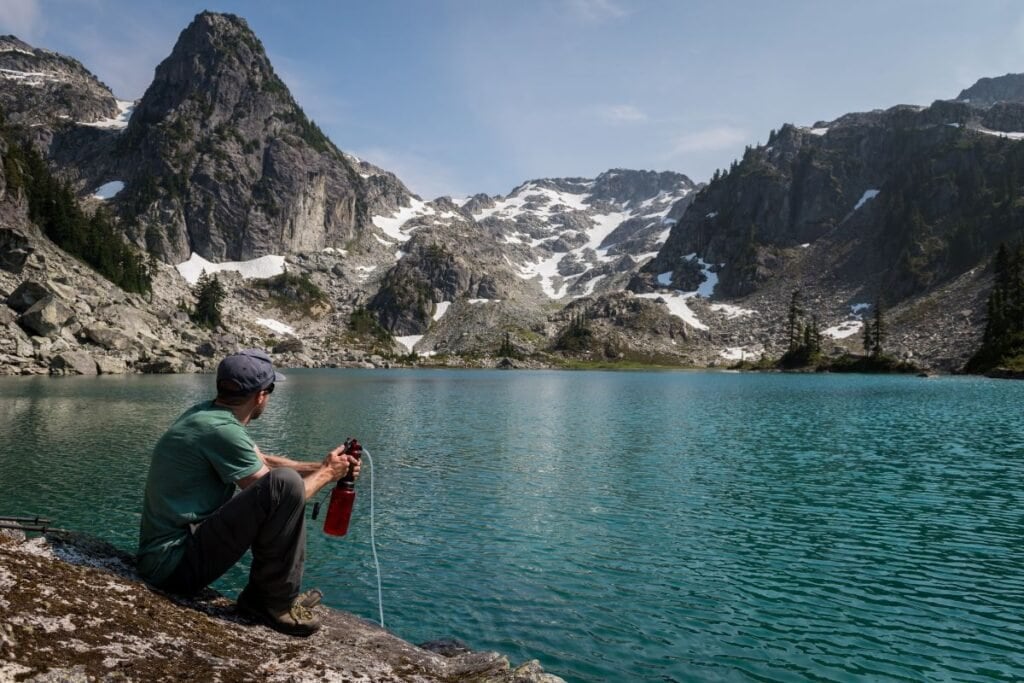We're an affiliate. We hope you love the products we recommend! Just so you know, we may collect a share of sales or other compensation from the links on this page. Thank you if you use our links, we really appreciate it!
LifeStraw is a company that specializes in water filtration and purification devices.
This compact, lightweight product is the perfect addition to any outdoor enthusiast’s survival kit.
There is no secret that water is the giver of life. Without water, we humans can not survive.
That’s why having a LifeStraw in the kit for times when unforeseen circumstances present themselves is so clever.
By allowing you to filter out harmful bacteria and decontaminate even the most questionable of water sources, you will gain added confidence in the wild.
In this article, we will run you through exactly how a LifeStraw works and how to use one.
We will also touch on a few of LifeStraw’s other products so that you can reap the benefits of clean, filtered water wherever you are, and whenever you are there.
What Is A Lifestraw?
A LifeStraw is a portable water filter that is primarily used to decontaminate water for human consumption.
One of the best things about a LifeStraw is its size – it is small.
Measuring just 12.2 inches in length and with a 1.18-inch diameter, LifeStraw (the brand) states that its water filter can conveniently slip into your pocket.
It is a plastic tube that features no moving parts. This is one of its biggest selling points as it increases its longevity and has less chance to break.
A LifeStraw can filter up to 264 gallons of water in its lifetime, which is the equivalent of an average person’s yearly water consumption.
It is built to eliminate 99.9% of bacteria and parasites in any body of water, which ensures people don’t get sick from drinking water.
How To Prime A Lifestraw
As the name suggests, a LifeStraw is essentially just a straw. Sure, it has a water filter built into it, but in terms of usage, it works a lot like a straw.
The only real difference is the first time that you use your LifeStraw as it must be primed before you can safely drink water through it.
But don’t worry, this process takes less than one minute and is very, very easy.
To prime a LifeStraw ready for use, you must first uncap the top and bottom of the LifeStraw.
You will then need to insert the straw’s base into the contaminated water source and let it sit for 30 seconds.
This will give the water time to channel up the internal membrane.
After 30 seconds, take five quick and forceful sucks. This will allow the water to start flowing.
One quick tip on priming a LifeStraw is to never let its mouthpiece get wet as this water will still be contaminated.
Only water that has been processed through the straw will be safe for human consumption.
How Do You Use A Lifestraw?
You have two options when using a LifeStraw.
The first option which is, undeniably, the more dignified approach, is to collect the water into a vessel and place the LifeStraw into the vessel.

This can be a water bottle, a bowl, a camping mug, or a bucket – any vessel will do.
By filling a vessel up with the contaminated water first, you eliminate the need to get down and dirty with wherever the water came from
The second option, which, if you hadn’t guessed, is the down-and-dirty option. In a survival situation, there are no points for dignity.
Getting down on your knees to suck up water from a puddle through your LifeStraw will work just as well as putting it in your camping mug and sipping it around the campfire.
The only precaution is to endeavor to never let the mouthpiece touch the question as this will render the LifeStraw rather useless until it is cleaned.
Another tip for using a LifeStraw is to blow a little air back through the filter after you are finished drinking from it.
Expelling the leftover water from your LifeStraw will ensure it remains clean even when not in use.
If you notice there is still some water dripping from the straw after you have blown air through it, a little shake in the breeze should help get rid of those last pesky drops.
How Does A Lifestraw Work?
One of the coolest things about LifeStraws, and a big reason for their popularity, is that they don’t rely on chemical or electrical filtration to function.
Instead, they use the old-fashioned system of physical filtration found in water filters of the past.
However, the difference lies in its effectiveness.
Where these archaic water filters aren’t able to wipe out germs on the microbiological level, LifeStraws can.
When Is A Lifestraw Useful?
If there is one thing that LifeStraws have going for them, it’s versatility.
Their portable nature and basic function make them high achievers in almost all environments and situations.
Whether you are going hiking, trekking, traveling, boating, camping, fishing, or for a leisurely walk, you may find a use for a LifeStraw.
On top of their many practical applications for people who love the outdoors, LifeStraws are extremely useful in a humanitarian crisis.
NGOs around the world have been acquiring LifeStraws in great numbers to help regions ravaged by natural disasters gain access to clean drinking water.
Whether it be floods, droughts, hurricanes, or any other natural disaster that affects people’s ability to access safe water, LifeStraws can be a reliable solution in the interim.
Conclusion
LifeStraws have the advantageous ability to eliminate bacteria and germs, from water, at the microbial level.
Whether you are thinking about getting a LifeStraw for your survival kit.
Or, simply allow you to do outdoor activities without the need to carry excess water.
Either way, hope this article has helped you to realize just how easy using a LifeStraw is.

We’re passionate about getting the most from your car when it comes to going on adventures and road trips. When you take one of these trips you often need more room in your car than you usually would. This is when we come in, to help you find the best roof tent for your car and needs.

